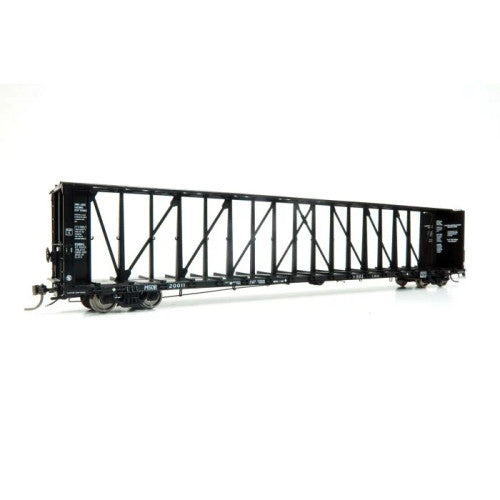Introducing the Rapido HO Scale NSC 73’ Centerbeam Flatcar, specifically representing the Mississippi Delta (MSDR) #20053, model number 174005 - 4. Note that the picture might show a different road number. Finished wood products are a commonly - carried yet often overlooked load on North American railroads. That's why we're excited to present this HO scale centerbeam car. Between 1987 and the mid - 2000s, over 20,000 of these cars were produced by National Steel Car, with various car variations. When you see a general merchandise freight go by, there's a high chance you'll spot at least four centerbeams. These centerbeams are unique as they're owned by large class I railroads, leasing companies, and smaller shortlines. Our HO Scale 73’ NSC Centerbeam fits a wide range of road names. This flatcar comes with amazing features. It has multiple side sill variations with different winch and ratchet setups, multiple top truss configurations including early Z pattern and standard closed pattern with or without tie - down brackets. There are two deck configurations (early with risers and mid without), two underbody setups, multiple end cage variants, multiple brake stand options, and six different truck types. It also has factory - installed rubber airhoses, see - through eroded metal crossover platforms, fully detailed underbodies with full brake piping and rigging, factory - installed metal grab irons and coupler lift bars, and free - rolling metal wheelsets.

Using your Rapido HO Scale NSC Centerbeam Flatcar is easy. Just place it on your model train track and let it roll along with your other train cars. You can use it to simulate the transportation of finished wood products in your model railroad setup. When handling the car, be gentle to avoid any damage to the delicate parts like the grab irons and coupler lift bars. For maintenance, regularly check the wheelsets to make sure they're rolling freely. You can clean the wheels with a soft cloth to remove any dirt or debris. If you notice any issues with the brake piping or rigging, handle them carefully or seek professional help. Store the flatcar in a dry and clean place when not in use to prevent rust and damage.









